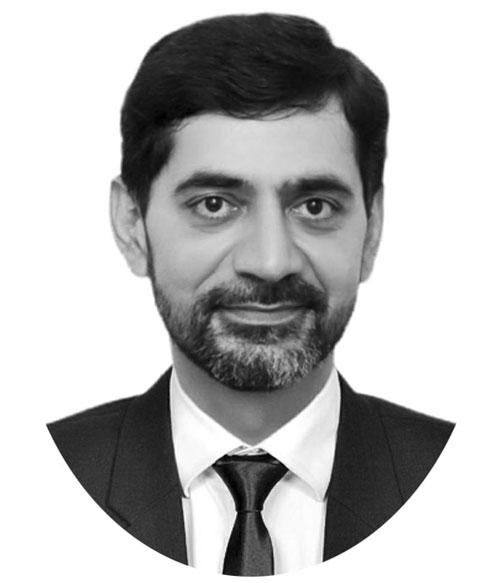Post-USA Afghanistan
IN April 2021, the USA announced that it would close its military mission in Afghanistan by September 2021.
The Taliban, who were controlling a few pockets of rural Afghanistan by then, ramped up attacks on Afghan National Army (ANA) and areas under their control.
By the first week of August 2021, the Taliban started capturing provincial capitals which began to fall in rapid succession. On 15 August 2021, Afghan President Ashraf Ghani fled the country and Afghanistan was left with no government.
The Taliban entered the capital despite announcing a few days ago that they would not attack Kabul, as chaos and anarchy could have engulfed the city in the absence of any security forces.
More than two weeks have passed since the takeover of Kabul but no official government has been announced in Afghanistan yet. The Taliban leadership seems to be in no hurry in forming a government and is meeting with other leaders like Hamid Karzai and Abdullah Abdullah to reach a political settlement.
It seems that they had realized that stable governing will need to include ethnic minorities, or else the country risks falling into the same sort of civil war that erupted in the 1990s.
History tells us that ending wars is relatively easy as compared to building peace after the end of the war. Anna K Jarstad, in her work titled, “The Peace In Between” argues that peace in a war-torn country is normally violent, sometimes more violent than the war itself.
She further explains that lasting peace can be achieved when international organization imposes sanctions on the warring parties and forces de-weaponization and demilitarization of the conflict zone and called it a “pacified peace”.
However, this cannot be ensured in Afghanistan as major international forces were themselves a party in this war and the USA has left so much military equipment while withdrawing that it is sufficient for raising a military for a medium-sized country.
So, is peace even possible in Afghanistan? The Taliban, in their earlier stint in the 1990s, were able to de-weaponize Afghan society and hence brought peace to the country.
Though there were international concerns about human rights and women’s education, but their achievements in eradicating poppy crops and de-weaponization have been acknowledged by all.
Peace in Afghanistan can only be ensured if all the regional powers play their positive role and do not support any local warlord for projecting their proxy wars in the region.
Afghanistan is a tribal society with warlords exercising control over their tribes. Most of the warlords have either fled the country or surrendered to the Taliban but their influence on their tribes cannot be easily diminished by the Taliban.
One of the leaders, the son of the slain Tajik warlord Ahmad Shah Massoud and deposed Vice President Amrullah Saleh have already set up a base in the Panjshir Valley, north of Kabul and have announced resistance against the Taliban.
Their success, however, depends on whether they can gather support from overseas especially India or Tajikistan.
Tajikistan supported Ahmad Shah Massoud during the earlier Taliban government of the 1990s, however, the power dynamics and the on-ground situation has changed.
Russia and China, the new regional superpowers, have already held talks with the Taliban leaders and given a hint of recognizing their government.
Russia has already ruled out allowing redeployment of the American military forces to the countries neighbouring Afghanistan and thus it is quite unlikely that Tajikistan will be willing to support the Tajik warlord Masood.
Moreover, the Taliban have made a deliberate strategic move by capturing all the entry points to Afghanistan including the Shir Khan Bandar pass with Tajikistan thus ruling out any major ground support from there. Thus, all-out support for Masood is quite unlikely if not impossible.
India, on the other hand, has been a major loser in the present scenario. Their heavy investment in Afghanistan has gone to waste as they had not developed any contacts with the Taliban and were supporting the government of the Northern Alliance throughout.
Therefore, India can try to support an insurgency movement in Afghanistan by supporting Masood and Amrullah Saleh as they did in the 1990s by establishing hospitals and providing military support for Northern Alliance against the Taliban.
However, with no direct ground link to Afghanistan, it would be an almost impossible to provide any substantial military support to their proxies on the ground.
The future of Afghanistan is with the Taliban; the earlier it is understood, the better it would be. Western powers led by the USA have learned it the hard way.
20 years of trying to impose the puppet government and providing it with billions of dollars of aid and arming ANA with the most sophisticated of weaponry has all proven to be a futile effort.
The real thing is that the Taliban was and is a political reality in Afghanistan. Now, it is a big challenge for the Taliban to form a government in Afghanistan that can ensure lasting peace in the region and an all-inclusive government seems to be the step forward.
Some activities by the anti-peace forces may be carried out like the recent terrorist attack at Kabul airport but it should not deter the world and let the Taliban establish their rule and then only be held accountable.
It is equally important that the future government of the Taliban fulfils its international responsibilities and for the international community to accept them as legitimate rulers of Afghanistan.
Any efforts on the contrary would create an unstable Afghanistan and that can again become the breeding ground for terrorism that the world wants to avoid at all costs.
—The writer is contributing columnist, based in Manchester, UK.










